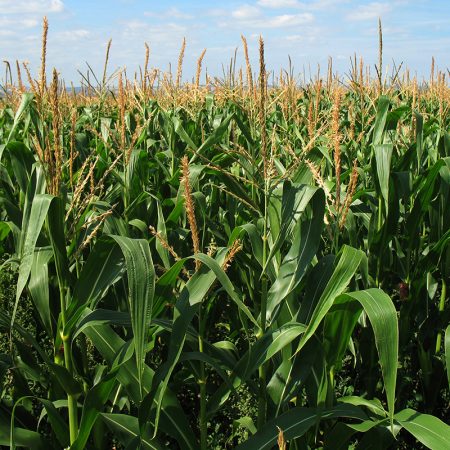
A groundbreaking paper from a team of Florida State University biologists could lead to a better understanding of how plants could adapt to and survive environmental swings such as droughts or floods.
The research, published in the latest issue of the journal The Plant Cell, sheds light on how chromatin (the complex of DNA and proteins) is organized in a cell and how plants regulate genetic material, so that some genes are turned on and others are turned off.
“If you understand how plants regulate their genetic material, you can possibly manipulate that in certain circumstances so that plants can withstand environmental changes,” said Daniel Vera, a Florida State graduate student in the Department of Biological Science and the lead author on the paper.
And that could mean major advances for the agriculture industry.
But the process to get there was a long road of painstakingly difficult research.
When Associate Professor Hank Bass initially conceived the project, he was actually looking to establish a protocol that scientists worldwide could use to map chromatin structures in plants. Though many scientists study plant genetics, they all used multiple ways to examine a cell’s DNA-protein complexes.

All cells in an organism typically have the same genetic material, despite the variation in tissues and organs. That is because within those cells, differential gene expression gives rise to different properties of tissues.
So, Bass, Vera, and a team that included post doctoral researcher Thelma Madzima and several other project members set out to find a way for scientists to better research this genetic material in plants. But, as they began their work, they hit a wall.
The research team exposed 12 different samples of a maize genome to an enzyme to cut through the DNA, except where it was protected by proteins — a method to chart the so-called chromatin landscape.
Despite careful control of the experiment, certain regions of DNA differed wildly from one sample to the next, initially leaving the researchers stumped and looking for answers.
Eventually, the group discovered that these variable regions were hypersensitive to the enzyme.
“It was almost like baking a cake,” Bass said. “It’s never the same if you bake it 32 different times. Three hundred-fifty degrees is not the same in every household.”
Once they discovered the root of the problem, researchers were able to control the enzyme reaction and show that these same regions were likely sites of genetic regulation.
In doing so, they found biochemical signatures in the DNA that scientists hadn’t previously examined. Bass compared it to putting on infrared goggles in a dark forest to suddenly see all the warm-blooded animals.
“We have found new ways to see really important parts of the chromatin,” Bass said. “People just missed it before.”
Added Madzima: “We would have totally missed this if we’d used previously used methods to map out maize chromatin.”
Though the research was conducted on maize tissues, the results and protocol established through the research are translatable to other plants and mammals.
This research was funded by a $1.5 million National Science Foundation grant through the Plant Genome Research Program and combined resources of three Florida State laboratories and one Florida A&M University lab.
Other researchers from the Department of Biological Science on the project include Assistant Professors Jonathan Dennis and Karen McGinnis, post doctoral researchers Jonathan Labonne and Parwez Alam, project manager Gregg Hoffman. Associate Professor of Statistics Jinfeng Zhang, and his graduate student S.B. Girimurugan also contributed.




